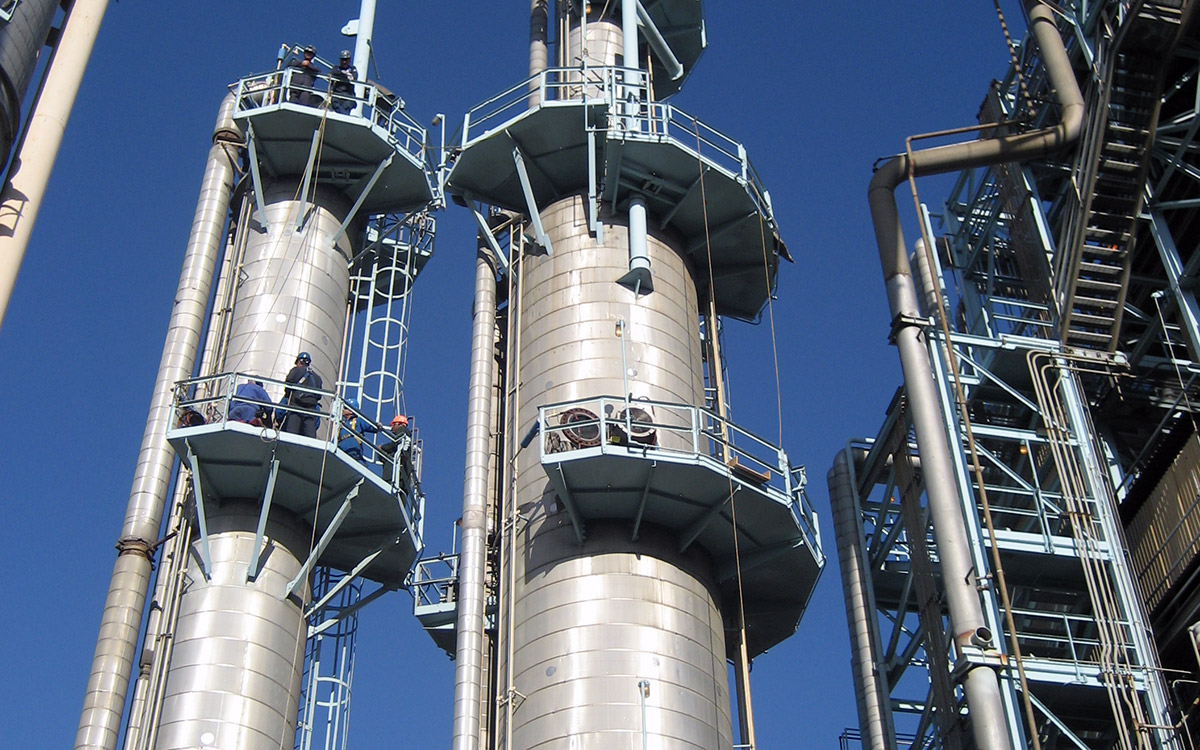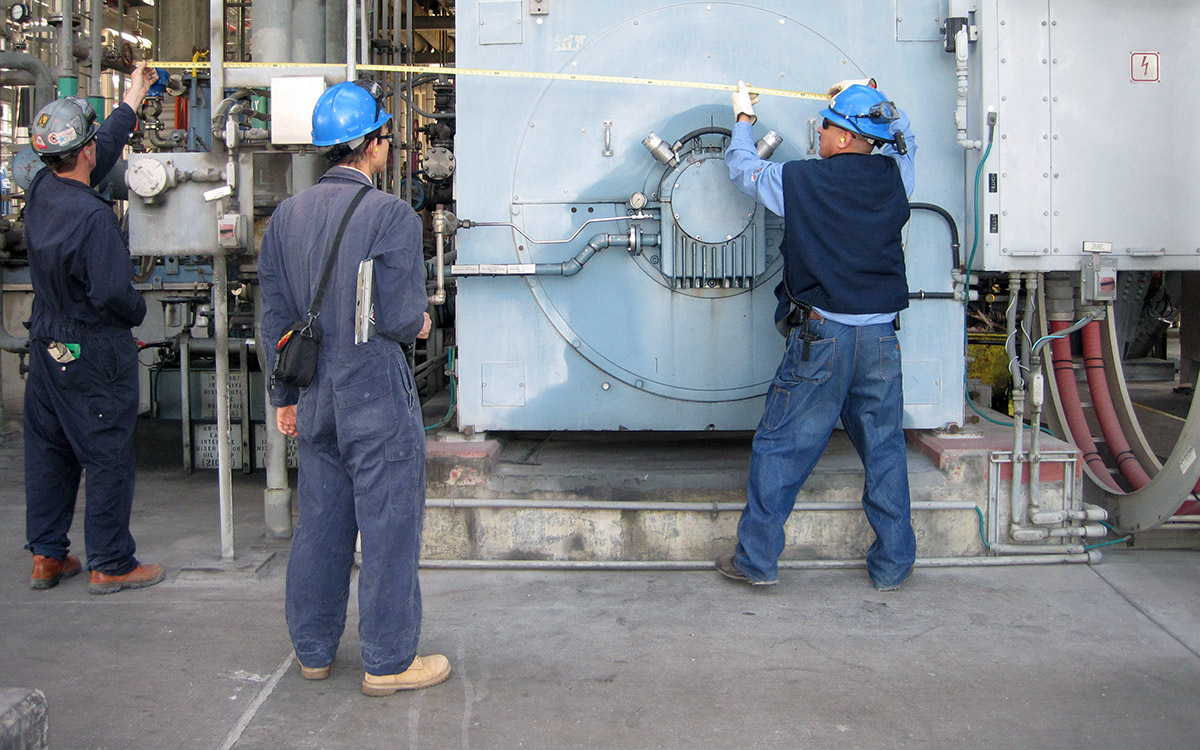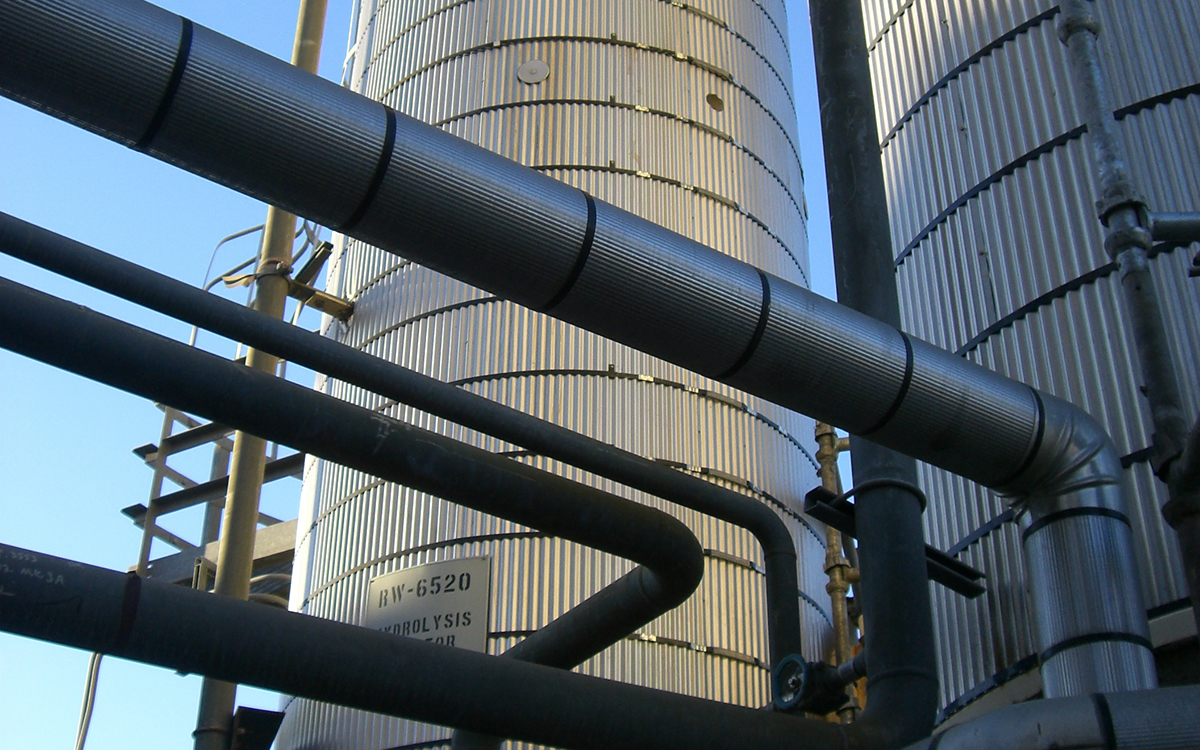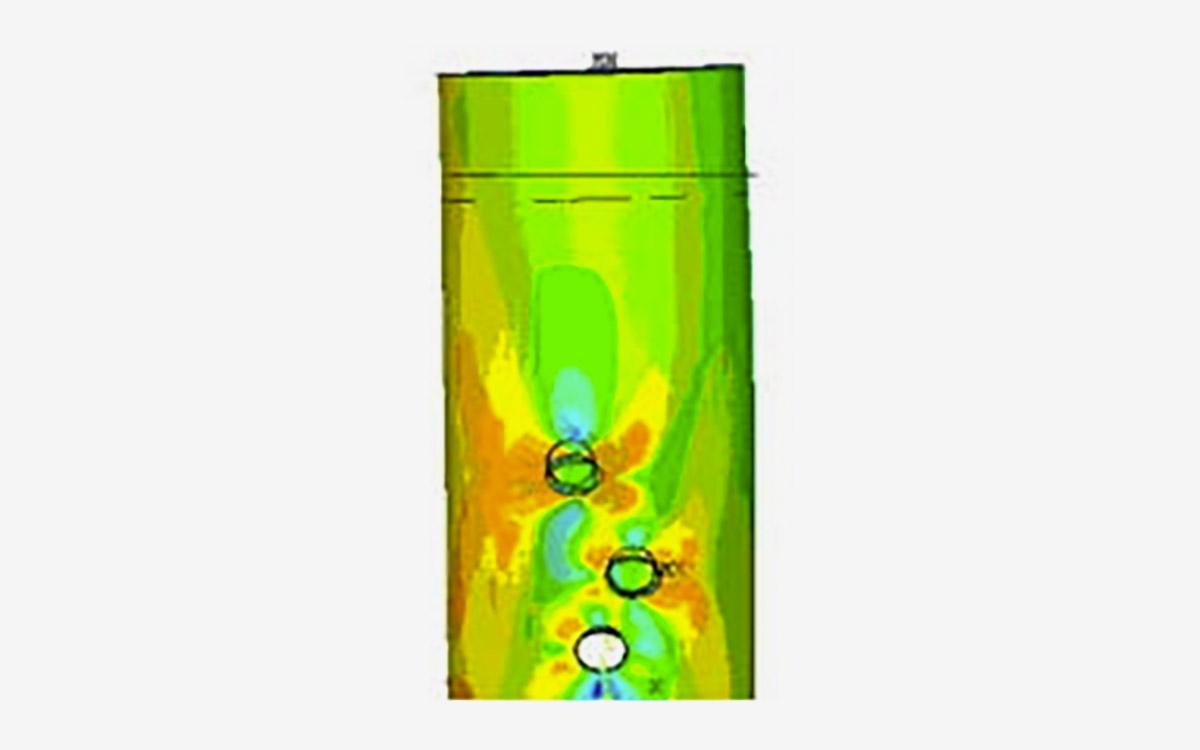A tall vertical vessel was to have significant welding work on several sections of the shell. This welding work necessitated a hydrostatic test of the vessel after the field work was completed. Filling the vessel with water produces significant live loads which are not normally experienced by the vessel structure and which were not a part of the original design. Buckling of the skirt was a risk. Buckling is a non-ductile phenomenon; once it started, the vessel skirt would collapse. Several large openings in the skirt compounded the concern.
Situation
Load Capacity Analysis Needed Before Hydrostatic Testing
![]()
![]()
![]()
Engineering Specialties Used
Risk Analysis
Buckling Analysis
Inelastic Analysis
Finite Element Analysis
Code Compliance




Solution
Finite Element Modeling
A three-dimensional finite element model (FEM) was built for the skirt including material post yield properties. Appropriate boundary conditions were applied and an incremental vertical static load was applied to the model until the onset of plastic collapse. Margins were calculated and compared to traditional Code margins. Closed-form calculations were completed for a simplified geometry and compared to the FEM methodology employed to validate the FEM approach. Careful evaluation revealed that sufficient margin remained to hydrostatically test the vertical vessel in place. We also checked the foundation stability for thin loading.

Finite Element Model of a Pressure Vessel Skirt
Summary
Critical Equipment Analysis
Argos Engineers is ready to partner with your turnaround team to analyze critical equipment. We can perform the detailed analysis needed to evaluate capacity and ensure there is a sufficient margin of safety.

